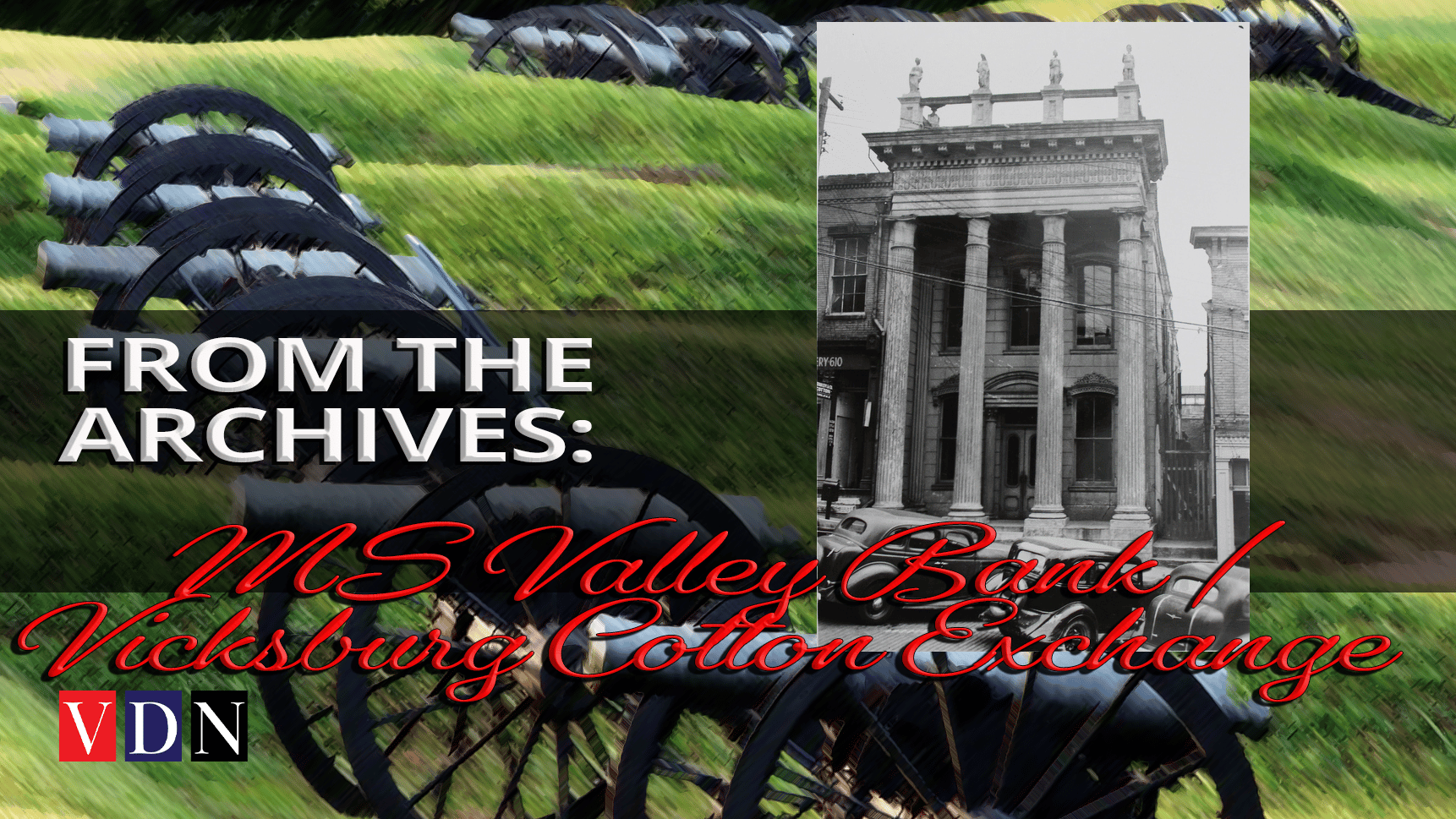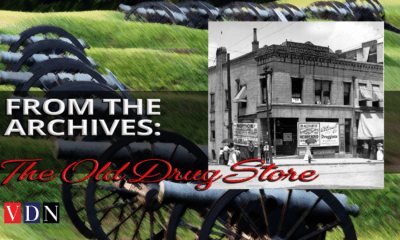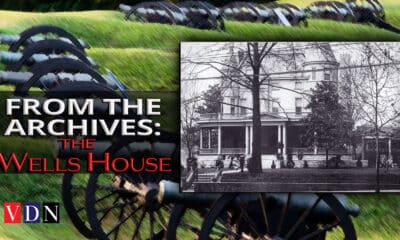Vicksburg History
From the Archives: Mississippi Valley Bank/ Vicksburg Cotton Exchange

Mississippi Valley Bank/ Vicksburg Cotton Exchange- This building began its life as early as 1860 in a much simpler form on the south side of Crawford Street, between Washington and Mulberry streets. It was occupied by Wirt Adams and Co, a bank and promoter of railroads.
In 1872, the building was remodeled for the offices of the Mississippi Valley Bank which had been organized in about 1870 by John and George Klein and D. W. and C. C. Floweree. The bank was first housed in the back section of the building on the northwest corner of Washington and Clay streets.
Extensive renovations were made to the Crawford Street building including an impressive two-story porch topped with four statues that represented Eurasia, Africa, Oceania, and America.
The Vicksburg Herald reported that “the doors leading to the counting house are of solid black walnut, with heavy French late glass, and are hung on double action hinges. The floor in the rotunda is tiled, and in the offices nicely carpeted. The bank proper is a large, well ventilated and commodious room, twenty-two feet wide and about fifty feet deep, and is finished off in the highest style of art. The ceiling is relieved by elaborate ornamentation, the cornices being spotless white to match. The walls are ornamented with a wainscoating (sic) of black marble with scienna (sic) panels. The counter is seventy feet long, and is of solid black marble richly and elegantly carved, and set off by beautiful medalions (sic) and spiral columns. The base is protected by a guard of polished brass. The mantles are all of East Tennessee marble and bear the monogram M. V. B., (Mississippi Valley Bank,) as does almost every article of furniture as well as al the doors of the building. Taste and elegance characterize every feature about the interior of the building, but not at the expense of security. The walls are not only burglar proof, but fire proof also, being rendered so in part by cast iron doors and window blinds. From an examination of the vault it would seem that it was the intention of the builders not merely to make assurance doubly sure, but to place security beyond the peradventure of a doubt. The vault is 9 by 12 feet in size and 12 feet high, and stands apart from the walls, with a passway around either side. It is built of solid masonry all the way up, with a base of solid masonry six feet deep underneath. One of the Hall’s celebrated iron safe doors, with combination lock leads to the vault, and inside these are two other iron doors. Inside this vault is a large fire and burglar proof safe, one of the finest and most costly in the country, in which are stowed away all the convertible funds of the bank—and securely too, for while there, neither fire nor water can tarnish, nor thieves break through and steal.”
The bank failed in 1883 and the building then became the home of The Vicksburg Cotton Exchange, which had occupied a building three doors to the east. The Cotton Exchange was founded in 1875 to collect statistical information about the position and prospects of the crops each month during the season, to identify and study grades of cotton, to collect telegrams from all the important cotton markets about their crops, and to take care of other important matters.
By November 1875, the Exchange had established committees for membership, statistics and information, trade, classification and quotations, finance, arbitration, appeals, freights and transportation, credits, and protection of cotton. Its board was made up of influential members of the community who also advocated for new infrastructures, such as bridges and roads
In 1948, the American Legion occupied the Cotton Exchange building. It was damaged by the 1953 tornado and demolished. Nancy Bell, Vicksburg Foundation for Historic Preservation.
See a typo? Report it here.












